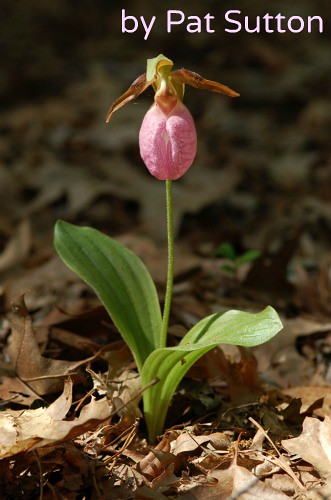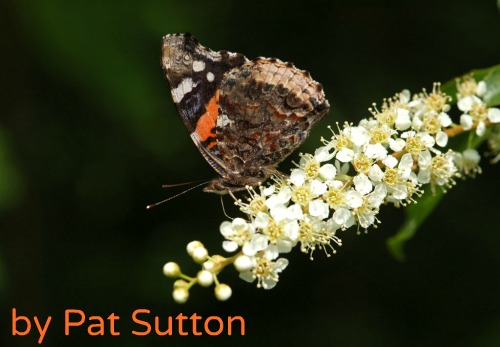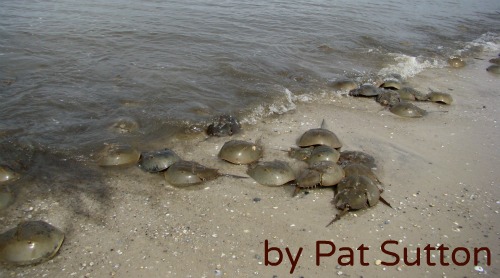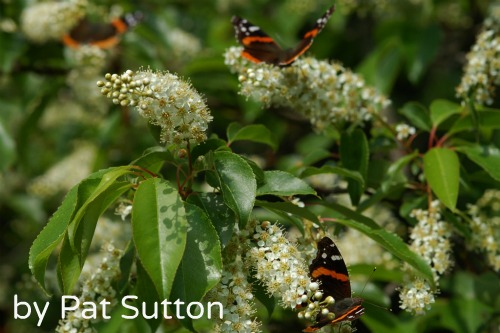
At the peak of Cape May County’s world-famous fall Monarch migration, tour diverse gardens that have hosted Monarchs since May. Each features native nectar plants and as many as five different kinds of milkweed (used by Monarchs for egg laying to create the next generation). Expect Monarchs and other butterflies, Monarch eggs, caterpillars, and maybe even a chrysalis. The complex Monarch migration will be both explained and enjoyed.
I’ve worked with 18 garden owners to line up this set of Garden Tours. Don’t miss this opportunity to see a fine selection of wildlife gardens with lovely stands of MILKWEED: Common Milkweed, Swamp Milkweed, Butterfly Weed, Whorled Milkweed, Purple Milkweed, and Tropical Milkweed. The annual, Tropical Milkweed, will be in bloom. Most of our native perennial milkweeds have already bloomed, but their robust leaves still pull in mating and egg-laying Monarchs well into the fall, as our local Monarchs create yet another generation. These gardens are coming into their fall attire, which will be as stunning as the summer garden, yet completely different.
2014 TOURS OF PRIVATE MONARCH GARDENS
10:00 a.m. to 3:30 p.m.
Friday, Sept. 19 — Mid-County Tour, including amazing gardens along the Delaware Bayshore in North Cape May and Villas
Saturday, Sept. 20 — North Tour, including Pat Sutton’s garden and other gems from Cape May Court House north to South Seaville
Sunday, Sept. 21 — South Tour, including gardens south of the Cape May Canal
Expect these gardens to also be hosting lingering hummingbirds, butterflies, caterpillars, stunning native plants, and undoubtedly some surprises. Fall migration will be underway, so anything’s possible.
TOUR DETAILS AND PRICING
Gardening naturalist and author, Pat Sutton, leads these tours, which include her own garden in Goshen (North tour). Bring lunch since the group will eat in one of the gardens.
Limit: 25 per tour.
Three Tours / Cost per tour: $35 members (NJ Audubon), $45 nonmembers.
(Join three tours at a discounted rate of $90 members, $115 nonmembers.)
These tours require preregistration with payment.
Registration: you may register by phone at 609.898.8848 with a credit card or send payment to the Nature Center of Cape May, 1600 Delaware Avenue, Cape May, NJ 08204 (noting which tours and full names, addresses, and phone numbers of registrants). NCCM reserves the right to cancel programs, and refunds are available only if NCCM cancels the event. Walk-ins are welcome on a space-available basis. Become a member of NJAS and receive discounts in the gift shop and on many programs.

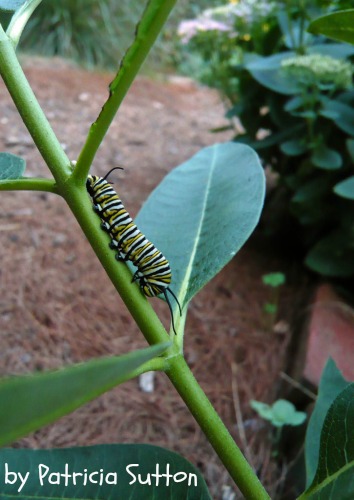


 We were away in South Carolina running two butterfly counts (in their 20th year – a whole other butterfly-rich story to tell). Upon our return on August 29th, we found our garden swimming in Painted Ladies. We tallied 21, far more than we’d ever seen in our garden before.
We were away in South Carolina running two butterfly counts (in their 20th year – a whole other butterfly-rich story to tell). Upon our return on August 29th, we found our garden swimming in Painted Ladies. We tallied 21, far more than we’d ever seen in our garden before.

 Much to our amazement, numbers steadily rose each day: 35 on August 30, 54 on August 31, and 70 on September 1. Numbers held steady at 70 for a few days, then shot up to 106 on September 5. Clouds of butterflies lifted, scattered, and settled back on blooming Sedum and other plants as we slowly and reverently walked through our magic garden.
Much to our amazement, numbers steadily rose each day: 35 on August 30, 54 on August 31, and 70 on September 1. Numbers held steady at 70 for a few days, then shot up to 106 on September 5. Clouds of butterflies lifted, scattered, and settled back on blooming Sedum and other plants as we slowly and reverently walked through our magic garden.


